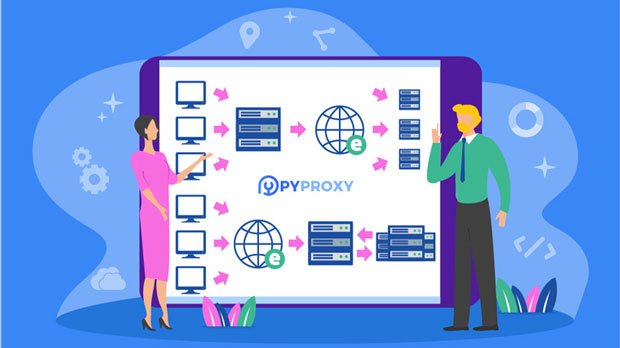In today's increasingly interconnected world, protecting online privacy and securing internet traffic have become paramount concerns. One way to improve online security is by using proxies, particularly socks5 proxies, which are known for their flexibility and anonymity features. This article aims to explore how SOCKS5 proxies can enhance security when used with the Google Chrome browser, offering practical insights into best practices and techniques for improving privacy, preventing data leaks, and ensuring secure browsing experiences. By understanding the strengths and potential vulnerabilities of SOCKS5, users can make more informed decisions on how to implement this technology effectively. What is SOCKS5 and How Does It Work in Chrome?SOCKS5, short for "Socket Secure version 5," is an internet protocol that acts as an intermediary between a user's device and the internet. Unlike traditional HTTP proxies, SOCKS5 is more versatile and can handle different types of traffic, including email, web browsing, file sharing, and more. It operates at a lower level, working with the Transmission Control Protocol (TCP) and User Datagram Protocol (UDP), which makes it more efficient and adaptable for various applications.When integrated with the Chrome browser, a socks5 proxy routes all internet traffic through the proxy server, masking the user's IP address and encrypting the data stream between the user’s device and the destination server. However, while SOCKS5 offers anonymity, it does not inherently provide encryption. This means that additional security measures must be taken to ensure the complete protection of user data.Benefits of Using SOCKS5 Proxy in Chrome1. Anonymity and Privacy: One of the main reasons users opt for SOCKS5 proxies is the added layer of anonymity they provide. By masking the user’s IP address, SOCKS5 prevents websites from tracking personal information, browsing habits, or geographical location. In a world where privacy concerns are rising, this benefit is invaluable for those who wish to remain anonymous online.2. Bypass Geographical Restrictions: SOCKS5 proxies allow users to bypass geo-blocked content, making it easier to access websites or services that are restricted in certain regions. Whether it's accessing streaming services, websites, or other online platforms, a SOCKS5 proxy can make it appear as though the user is browsing from a different location, offering greater access to information and services.3. Improved Performance: SOCKS5 supports both TCP and UDP traffic, allowing for faster and more efficient data transfers. This can improve the browsing experience, especially when using applications that require high-speed data transfers, such as video streaming or online gaming.4. Flexibility and Compatibility: SOCKS5 works well with various protocols and services, including peer-to-peer (P2P) applications and torrent clients. Additionally, SOCKS5 is supported by a wide range of platforms and devices, making it an adaptable choice for users who require flexibility in their internet usage.Potential Security Risks of SOCKS5 ProxiesWhile SOCKS5 offers several advantages, it is not without its security risks. It’s important for users to be aware of the vulnerabilities that may exist when using this protocol, particularly in conjunction with the Chrome browser.1. No Built-in Encryption: Unlike VPNs (Virtual Private Networks), SOCKS5 does not offer encryption by default. This means that while your IP address is hidden, the data being transmitted between your device and the proxy server is not protected from eavesdropping. If a malicious actor gains access to your internet traffic, they could potentially intercept sensitive data like passwords, personal messages, or financial information.2. DNS Leaks: Another common risk when using SOCKS5 proxies is DNS leaks. When configured incorrectly, a SOCKS5 proxy might fail to route DNS queries through the proxy server, allowing them to be exposed to the Internet Service Provider (ISP) or other third parties. This can compromise the user's privacy, as DNS queries can reveal the websites being visited.3. Reliability of Proxy Servers: The level of security provided by a SOCKS5 proxy depends heavily on the proxy server being used. Some proxies may not be properly configured, which could result in vulnerabilities such as IP address leaks, unsecured data transmission, or exposure to cyber threats. It is critical to use trustworthy, well-configured SOCKS5 servers to mitigate these risks.Best Practices for Enhancing SOCKS5 Proxy Security in ChromeWhile SOCKS5 proxies can offer improved security and anonymity, their effectiveness largely depends on how they are configured and used. To ensure maximum security, users should implement the following best practices:1. Use Additional Encryption LayersSince SOCKS5 does not provide encryption by default, combining it with other security measures, such as HTTPS and SSL/TLS encryption, is essential. When browsing websites, always ensure that the site uses HTTPS to encrypt traffic. For additional protection, using a VPN in conjunction with a SOCKS5 proxy can further secure the data stream by encrypting all the traffic between the user’s device and the VPN server.2. Configure the Proxy Settings CorrectlyTo avoid DNS leaks, users should ensure that their SOCKS5 proxy is configured properly in Chrome. This involves routing all internet traffic, including DNS queries, through the proxy server. Users can configure DNS settings manually within Chrome to avoid default settings that may expose browsing activity to the ISP.3. Use a Reliable SOCKS5 Proxy ServiceSecurity is only as strong as the proxy server in use. Therefore, it is crucial to select a reliable SOCKS5 proxy service that is known for maintaining a high level of security. Ensure that the proxy service provides features such as DNS leak protection, strict no-logs policies, and robust anti-fingerprinting measures.4. Regularly Test for IP and DNS LeaksTesting for IP and DNS leaks is vital when using a SOCKS5 proxy in Chrome. Regularly performing leak tests can help identify potential issues with proxy configuration, ensuring that your real IP address is not exposed. Several online tools are available to test for DNS and IP leaks, allowing users to address any issues before they compromise privacy.5. Monitor for Malware and Phishing AttacksUsing a proxy does not automatically protect against malware, phishing attacks, or malicious websites. Always use comprehensive security software that can detect and block these threats. Additionally, practice safe browsing habits, such as avoiding clicking on suspicious links or downloading unverified files, to minimize the risk of cyber threats.Conclusion: Maximizing SOCKS5 Proxy Security in ChromeSOCKS5 proxies offer several advantages, including anonymity, privacy, and the ability to bypass geographical restrictions. However, users must be vigilant about potential security risks such as the lack of encryption, DNS leaks, and unreliable proxy servers. By implementing the best practices outlined above, users can significantly enhance their online security while using SOCKS5 proxies in the Chrome browser. Combining SOCKS5 with additional encryption tools, properly configuring proxy settings, using reliable services, and conducting regular security tests are all essential steps to ensure a safe and secure online experience.
Jan 02, 2025





















































